Solar Geometry, Solar Radiation and Solar Control
An introductory lecture
An introductory lecture
Grouping broadly, the major influences on the comfort within a building are defined by:
- The external environment
- internal equipment and activities
- The building construction and form
Solar radiation is a dominant influence on all climatic factors. We can consider these as
- Primary (direct/immediate)
- Secondary (indirect/delayed)
Solar Geometry describes the relationship between the sun and earth
or more importantly
The relationship of solar radiation, the product of the sun with any location on the earth
or more importantly
The relationship of solar radiation, the product of the sun with any location on the earth
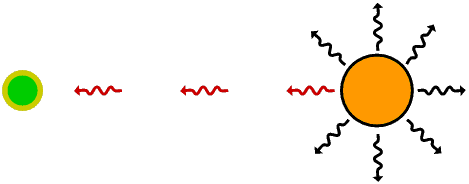
The earth orbits the sun in an approximate circle (radius 150 000 000 km) with the sun at its centre.
The plane of the earths revolution is called the ecliptic and includes the sun.
The plane of the earths revolution is called the ecliptic and includes the sun.
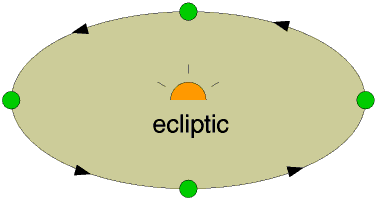
The earth rotates about an axis tilted 23.45o from the normal to the ecliptic (ie a line at right angles to the plane)
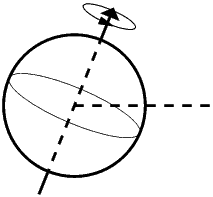

The earth does NOT rotate in its orbit but is translated (ie slides)
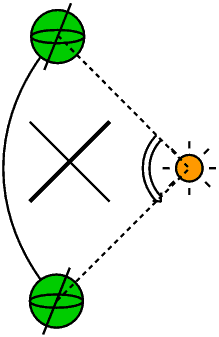
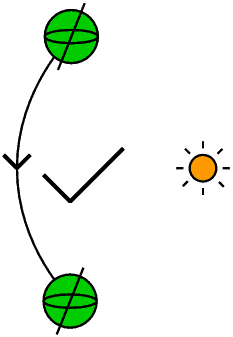


If the earth rotated about the sun then the angle between a line joining the earth and sun would never change.
However the sliding motion of the earth results in this angle varying from 66.55o (90-23.45) to 113.45o (90+23.45).
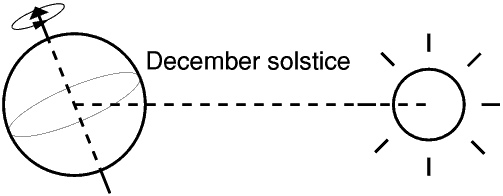
This change is represented by the term
DECLINATION. The declination angle is the angle between the ecliptic and
the equatorial plane.
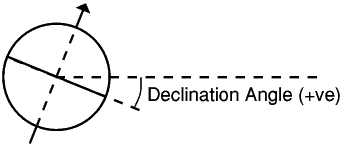

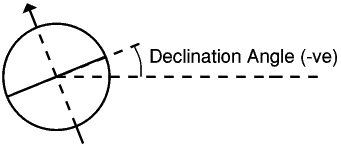
The declination changes throughout the year
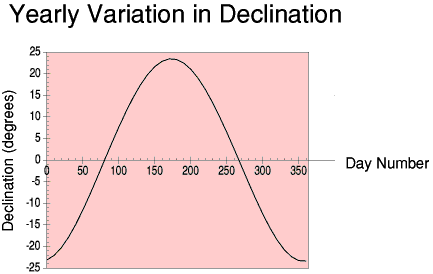


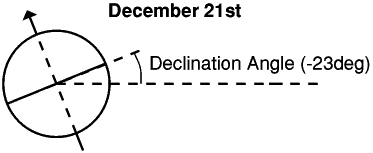
The equator is a convenient reference
from which to measure latitude: the earths axis is the normal to this
plane. Locations above this plane (ie northern hemisphere) are generally
considered to be positive whilst those below (southern hemisphere) are
negative.
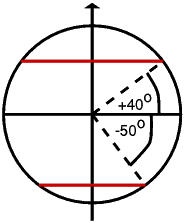

A location needs to be specified
horizontally. A reference for this is less obvious but is taken as a
semicircular plane, perpendicular to the equatorial plane and passing
through Greenwich. Longitude is defined as the angle between this
reference and a similar semicircle passing through the location. No
consistent convention of positive and negative longitude exists.
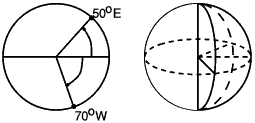

All locations at the same latitude experience the same
geometrical relationship with the sun. Any differences are acountable by
local climate and differences in atmospheric composition.
At a local level we can think of the earth as being flat.
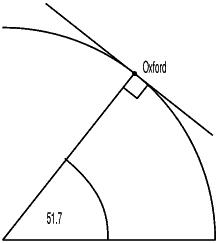
It is usual to describe the relationship between solar
radiation at any location in solar time. This is a time scale in which
12 noon is the time at which the radiation arrives perpendicular to the
earths surface (ie from the South or North depending on latitude and
time of year). Solar noon occurs at the same time for any location with
the same longitude.
 |
 |
 |
 |
Solar noon will occur 1 hour earlier for every 15 degrees east and 1 hour later for every 15 degrees west.
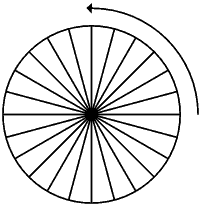
Time Zones are based on the MEAN Solar Time at a specific longitude. For example UK time is based on the MEAN Solar Time at 0o.The Equation of Time takes account of seasonal differences.


For Example: Solar Time for
Swansea(4oW) = Local Time - 4x4 + EOT minutes
Great Yarmouth(2oE) = Local Time + 2x4 + EOT minutes
note this is correct only for Winter/Spring when local time is Greenwich Mean Time. Subtract a further hour in Summer/Autumn.Take an example of an office building in Swansea is in use from 8am until 6pm. When is the earliest and latest in Solar Time at which it will be used?
Earliest Solar Time will occur in the summer.

Earliest occupation will occur at:
08.00 - 0.16 - 0.07 - 1.00i.e 06.37 Solar Time at end of July

Latest occupation will occur at:
18.00 - 0.16 + 0.17i.e 18.01Solar Time at beginning of November

We can easily derive the angle at which solar radiation reaches the earths surface at solar noon.
When declination is zero (March/September Equinox), this is simple:
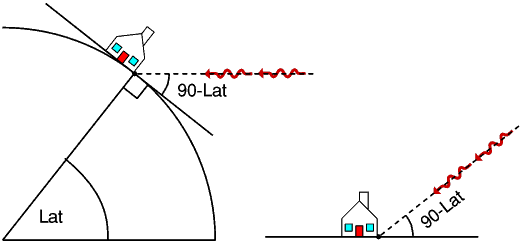

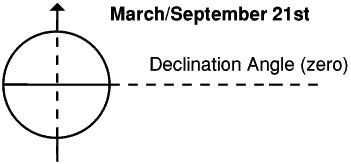
No comments:
Post a Comment